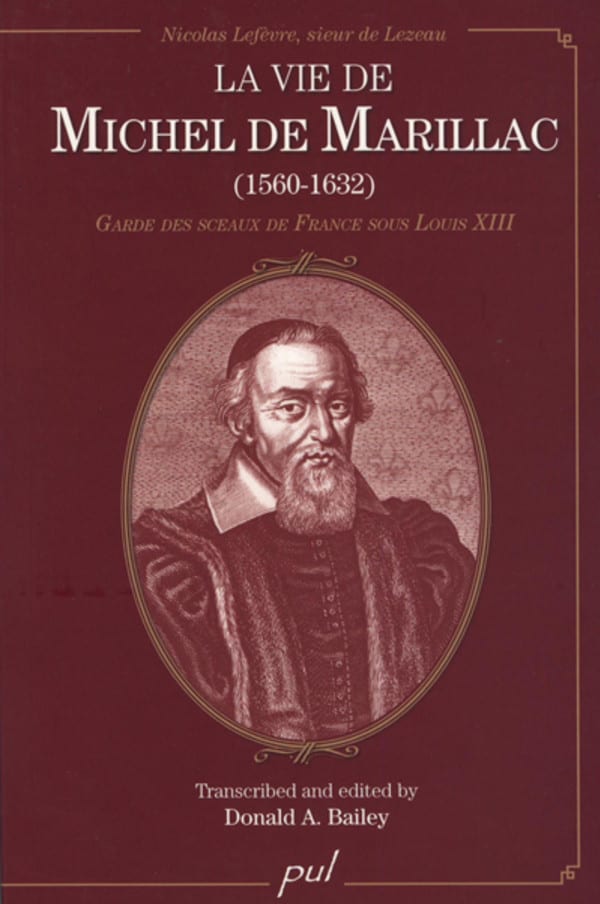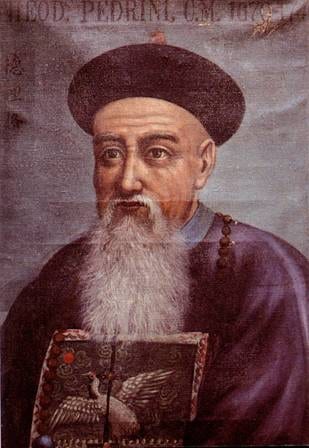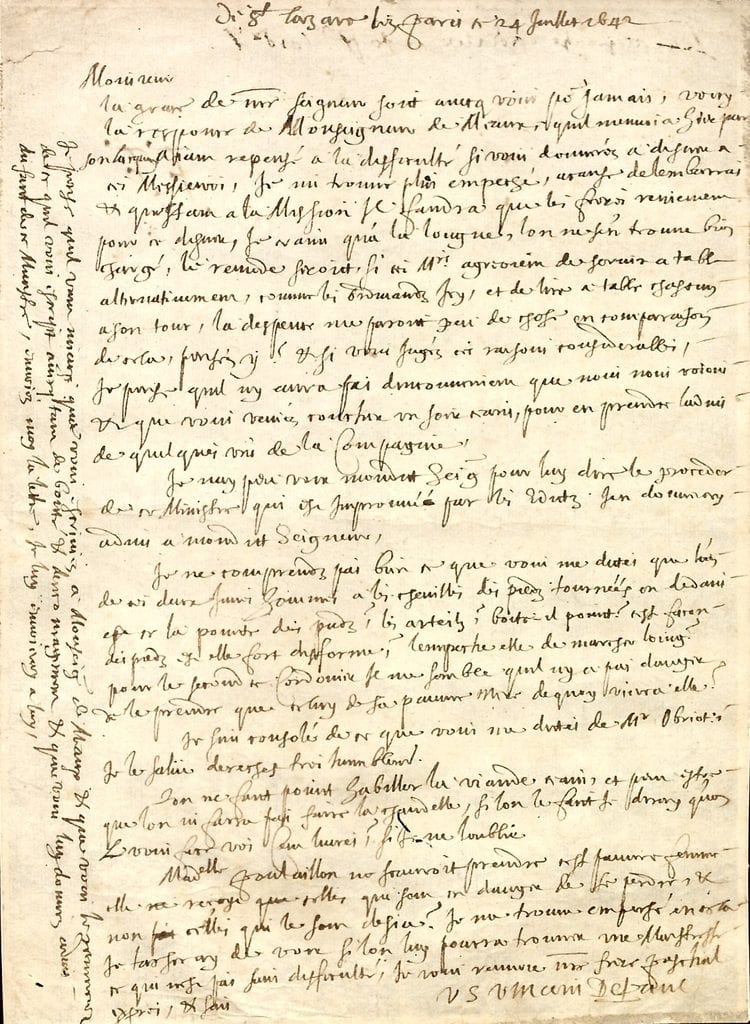This journal was published in Paris from 1924-1940 by the Amis des Missions. During its short run it contained a number of articles about Vincentian missions written by Pierre Coste, C.M., and other noted Vincentian historians of the period.
vincentian history
Vincentian Heritage Collections – digital resources for the Vincentian scholar
The Office of Mission and Values, the Vincentian Studies Institute, and the John T. Richardson Library at DePaul University continue to develop the Vincentian Heritage Collections – a digital repository of documents, texts, and ebooks pertaining to Vincentian Heritage.
In a little over one year, the project has added over 577 articles and 145,000 pages of material to the site. Usage statistics indicate there have been over 7,500 visits to the site from 99 countries. As the collection continues to acquire, process, and add new content, it will also adopt new features and functionality to improve the end user experience. Because the digital platform from Berkeley Electronic Press is only a few years old, developers are continually working to make improvements and adjustments.
Already a useful tool for scholars around the world, the Vincentian Heritage Collections will continue to be an important element in DePaul’s plans to make scholarly resources more readily available online.
As the Collections add new content or features, we will continue to send updates. If you have questions about the site or suggestions to improve it, please contact the project team at mission.depaul@gmail.com
VHRN Book of the Week
BaileyReview-17kadee BaileyReview-17kades  Donald A. Bailey, transcriber and editor of Nicolas Lefévre, sieur de Lezeau, La vie de Michel de Marillac (1560-1632), Garde des Sceaux de France sous Louis XIII. Les Presses de l’Université Laval, 2007. 724pp. Illustrations, maps, tables, appendices, notes, bibliography, and index. $69.95 CAN ISBN 978-2-7637-8313-0.
Donald A. Bailey, transcriber and editor of Nicolas Lefévre, sieur de Lezeau, La vie de Michel de Marillac (1560-1632), Garde des Sceaux de France sous Louis XIII. Les Presses de l’Université Laval, 2007. 724pp. Illustrations, maps, tables, appendices, notes, bibliography, and index. $69.95 CAN ISBN 978-2-7637-8313-0.
From the publisher: La Vie de Michel de Marillac, written by his devoted friend Nicolas Lefèvre de Lezeau, is here presented for the first time in its integrity. Important home d’état, Michel de Marillac (1560-1632) served the French Crown as councilor in the Parlement de Pars, maître des requêtes under Henry IV, and conseiller du roi under Louis XIII. Becoming a conseiller d’état, he was named Surintendant des Finances (from August 1624 to June 1626), then Garde des Sceaux until his disgrace in mid-November 1630, after the famous Day of Dupes. By his intelligence, energy, experience and probity, he was one of the most significant figures in the reign of Louis XIII. Marillac was the principal author of the Ordonnance de 1629, the largest ever codification of French law, which was known familiarly by his name: the “Code Michau.” Chief of the dévot part, he was among the most influential lay persons active in the establishment in France of the Reformed Carmelites (1602-1604), the Ursulines (1610) and the Oratorians (1611). He produced one of the best translations of Thomas à Kempis’s Imitation of Christ and a translation of the Psalms, and was the author of several other scholarly works.
Read the review: BaileyReview-17kades
An Invitation to Publish with Vincentian Heritage
By way of introduction, my name is Nathaniel Michaud and I serve as Publications Director for the DePaul University Vincentian Studies Institute. We publish the journal Vincentian Heritage, as well as a scholarly monograph series and a variety of special publication projects.
For those who may not be familiar with us, the Institute is dedicated to promoting research and a living interest in the historical and spiritual heritage of Saint Vincent de Paul and Saint Louise de Marillac, the patrons of the wide-ranging Vincentian Family including the Congregation of the Mission, the Daughters of Charity, the Ladies of Charity, the Sisters of Charity, the Society of St. Vincent de Paul, and a number of other congregations, communities, and lay movements who share a common dedication to serving those in need.
If you are involved in such research, and are seeking an outlet for possible publication, I would like to take this opportunity and invite you to consider submitting your work to the V.S.I.
Vincentian Heritage welcomes manuscripts, poetry, and other expressions of Vincentian themes that meet the publication criteria. All articles should relate directly to topics of Vincentian interest, and be researched and documented in a scholarly fashion. Ordinarily, articles should not exceed thirty typewritten pages and should be submitted as a Word Document twelve months prior to anticipated publication. Publication is subject to the approval of our Editorial Board.
We would also welcome recommendations you might have regarding possible article reprints or translations, works you may have found in your research which you feel deserve a wider audience.
Finally, if you are working on a book-length manuscript the V.S.I. would certainly welcome proposals which fit within the parameters of our monograph series or our special publications.
For more information, including links to our editorial style sheet and monograph series, please click on this link and visit our web site at: The Vincentian Heritage Journal
We thank you for considering this possibility and hope to hear from you.
If you have any questions, or would like to submit an article or proposal for possible publication, I can be reached at:
Mr. Nathaniel Michaud
DePaul University Vincentian Studies Institute
Suite 850F
55 East Jackson Blvd.
Chicago, IL 60604
Email: nmichaud@depaul.edu
Phone: 312-362-6169
Myth Deconstruction: Vincent accused of theft
 In his biography of Vincent de Paul, Louis Abelly introduced a number of hagiographic myths that continue to haunt Vincentian studies. For example, Abelly took a conference in which Vincent had related the story of someone he knew who was once falsely accused of theft, and applied it to the saint himself. Abelly says that the truth of this incident “became known only after his (Vincent’s death), through the testimony of Monsieur de Saint Martin, canon of Dax…” According to Abelly’s account (found in Chapter five of his biography), the judge from Sore who had been incensed by Vincent’s denial of the theft: “knew that Monsieur Vincent was in the habit of consulting Father [Pierre] de Berulle….The judge took the occasion one day to find Monsieur Vincent in Father de Berulle’s company, together with several other distinguised guests. He publicly berated Monsieur Vincent, calling him a thief and formally serving a writ upon him, requiring him under threat of excommunication to testify before an ecclesiastical court. The man of God showed no resentment at this affront, took no great pains to justify himself, but said calmly ‘God knows the truth.'” In his biography Pierre Coste, C.M., largely repeats Abelly’s account and interpretation with only minor changes.
In his biography of Vincent de Paul, Louis Abelly introduced a number of hagiographic myths that continue to haunt Vincentian studies. For example, Abelly took a conference in which Vincent had related the story of someone he knew who was once falsely accused of theft, and applied it to the saint himself. Abelly says that the truth of this incident “became known only after his (Vincent’s death), through the testimony of Monsieur de Saint Martin, canon of Dax…” According to Abelly’s account (found in Chapter five of his biography), the judge from Sore who had been incensed by Vincent’s denial of the theft: “knew that Monsieur Vincent was in the habit of consulting Father [Pierre] de Berulle….The judge took the occasion one day to find Monsieur Vincent in Father de Berulle’s company, together with several other distinguised guests. He publicly berated Monsieur Vincent, calling him a thief and formally serving a writ upon him, requiring him under threat of excommunication to testify before an ecclesiastical court. The man of God showed no resentment at this affront, took no great pains to justify himself, but said calmly ‘God knows the truth.'” In his biography Pierre Coste, C.M., largely repeats Abelly’s account and interpretation with only minor changes.
Contrast the above story with this fact: On April 17, 1628 Vincent de Paul gave sworn testimony in the beatification process of Francis de Sales. As he began his testimony Vincent said: “I know that perjury in all cases, but especially in those of canonizations such as this one, is a very serious mortal sin, which, by the grace of God, I never want to commit.” A few statements later Vincent says: “Never, by the grace of God, have I been accused of any crimes, nor been investigated, nor brought before any judge; nor have I, by name been denounced publicly or excommunicated.” (Coste, CCD, Volume 13b, 80-81).
This evidence again points to the ongoing importance of the careful deconstruction of Abelly’s enduring myths to uncover the Vincent of history.
Research Resource: “L’Oeuvre de la Sainte-Enfance.”
 There has been a more-or-less continual Vincentian presence in China for over 300 years. However, the heyday of the China mission was the second half of the ninteenth and first half of the twentieth centuries. During this period, especially before the First World War, the Vincentian presence was almost exclusively French. These missions received massive grants from L’Oeuvre de la Sainte-Enfance (The Holy Childhood Association). The charity was founded in France in 1843 by Charles-Auguste-Marie-Joseph de Forbin Janson the bishop of Nancy. The world-wide growth of the charity in the next decades was astounding, and the financial support it provided to missions around the world in support of orphans and children was substantial. The missions of the Congregation of the Mission and the Daughters of Charity in China were among the grateful recipients. From 1843-1976 the Association published a journal highlighting fascintaing letters from missionaries in the field.
There has been a more-or-less continual Vincentian presence in China for over 300 years. However, the heyday of the China mission was the second half of the ninteenth and first half of the twentieth centuries. During this period, especially before the First World War, the Vincentian presence was almost exclusively French. These missions received massive grants from L’Oeuvre de la Sainte-Enfance (The Holy Childhood Association). The charity was founded in France in 1843 by Charles-Auguste-Marie-Joseph de Forbin Janson the bishop of Nancy. The world-wide growth of the charity in the next decades was astounding, and the financial support it provided to missions around the world in support of orphans and children was substantial. The missions of the Congregation of the Mission and the Daughters of Charity in China were among the grateful recipients. From 1843-1976 the Association published a journal highlighting fascintaing letters from missionaries in the field.
The journal of the American Historical Association has recently published an article by Henrietta Harrison entitled: “A Penny for the Little Chinese”: The French Holy Childhood Association in China. 1843-1951
https://dash.harvard.edu/bitstream/handle/1/3228646/Harrison.pdf?sequence=2
VHRN Event: “From Beijing to Paris: Baroque Music from China and from St. Vincent de Paul’s Paris”
 Ars Musica Chicago presents “From Beijing to Paris: Baroque Music from China and from St. Vincent de Paul’s Paris” at 4:00 p.m., Sunday, March 6, 2011 at the DePaul Art Museum in the Richardson Library of DePaul University, 2350 North Kenmore Avenue, Chicago.
Ars Musica Chicago presents “From Beijing to Paris: Baroque Music from China and from St. Vincent de Paul’s Paris” at 4:00 p.m., Sunday, March 6, 2011 at the DePaul Art Museum in the Richardson Library of DePaul University, 2350 North Kenmore Avenue, Chicago.
This concert will present Baroque music with Vincentian themes: music composed in China by an Italian Vincentian priest, and music that St. Vincent de Paul might have heard in his early days in Paris.
Featured will be a modern world premier performance of a violin sonata composed by Father Teodorico Pedrini during his 35 years in China in the early 18th century.
Fr. Pedrini, a Vincentian missionary and Vatican emissary, served as music master at the courts of the Qing emperors. He taught music to the Emperor’s children, and tuned and maintained the court’s many harpsichords; he co-authored the first book on Western musical theory written in Chinese; and he founded a church, which, though rebuilt, is still in Beijing.
The sonata will be performed by renowned Baroque violinist Nancy Wilson and harpsichordist Joyce Lindorff, Professor of Keyboard Studies at Temple University, Philadelphia. They are in the process of recording all twelve of Pedrini’s Opus 3 violin sonatas for commercial release.
Interspersed throughout the program Dr. Lindorff, early music scholar and international expert on the harpsichord in China and the music and life of Pedrini, will share with the audience portions of the composer’s correspondence detailing his fascinating experiences in the Chinese court. She will also outline her research on the manuscript of Pedrini’s twelve violin sonatas, which is still preserved in archives in Beijing today.
The second half of the program moves from the courts of China to the court and streets of Paris. The audience will be able to enjoy lute songs from the early 17th century, which St. Vincent de Paul may have heard as a young priest in Paris. These lovely and evanescent airs de cour will be performed by the matchless pair of Stephanie Sheffield, soprano, and Joel Spears, lute. Also from Vincent’s Parisian years, Joyce Lindorff will perform a beautifully delicate harpsichord suite by Louis Couperin.
Tickets for the concert are $20 regular admission; $15 for seniors; free for DePaul University students; and $5 for non-DePaul students with ID. For more information, please email arsmusicachicago@aol.com or phone 312-409-7874.
Discounted parking through validation is available at DePaul University’s Sheffield parking garage, 2331 N. Sheffield, Chicago. Validation may be made at the desk at DePaul’s Richardson Library. Public transit access is available via the Fullerton stop on the Red Line and the #74 Fullerton and #11 Lincoln busses.
This concert is generously underwritten by a grant from the Vincentian Endowment Fund of DePaul University. Ars Musica Chicago is funded in part by the Illinois Arts Council, a state agency; a CityArts I Grant from the Chicago Department of Cultural affairs; and by generous individual contributors.
About Ars Musica Chicago
Since 1986, Ars Musica Chicago has provided concerts, workshops and educational outreach events on music from the 12th to the 18th century for audiences in the Chicago area. For more information, please visit www.arsmusicachicago.org
Additional Information
At present, there are two commercially available recordings containing violin sonatas from Pedrini’s Opus 3. Both recordings are performed by Ensemble XVIII-21 Musique des Lumières:
1) Teodorico Pedrini: Concert Baroque à la Cité Interdite – 5 solo sonatas (Astrée)
2) Amiot: Messe des Jésuites de Pékin – two movements of one sonata (Naïve)
What makes this concert possible is, according to Lindorff, an “unlikely cultural convergence during the 17th and 18th centuries that…set the stage for a nearly two century heyday of Western keyboard instruments in China.” Serving as a composer and tutor, Pedrini may even have played the harpsichord with one of the emperors himself. An unusual and unexpected crossing of East and West, she finds that at the time, and to varying degrees, “the clavichord and harpsichord were favorite instruments of the Chinese court in Beijing.”
For further details on Fr. Teodorico Pedrini, his music and life, see the article by Joyce Lindorff and Peter C. Allsop available on line: http://via.library.depaul.edu/cgi/viewcontent.cgi?article=1283&…
Vincent de Paul Manuscript Letter Acquired
The Vincentian Studies Institute of DePaul University recently acquired a manuscript letter of Vincent de Paul. The letter is #603 in Coste, dated 24 July 1642 at Saint Lazare in Paris. The recipient was Pierre du Chesnay in Crecy. This letter is in Volume 2 of the English Edition, pages 311-313. Click here to access: http://via.library.depaul.edu/coste_en/ The letter will join the other Vincent de Paul manuscripts in the Archives and Special Collections Department of the Richardson Library. The letter was purchased from a French collector who is the friend of a confrere at the Maison-Mere in Paris.
VHRN Book of the Week
 Church, Society, and Religious Change in France, 1580-1730 by Joseph Bergin
Church, Society, and Religious Change in France, 1580-1730 by Joseph Bergin
Yale University Press, 2009, 506 p
ISBN: 9780300150988
Winner of the 2010 Me du concours des antiquites de France given by the Academie des Inscriptions et Belles’Lettres in Paris
This readable and engaging book by an acclaimed historian is the only wide-ranging synthesis devoted to the French experience of religious change during the period after the wars of religion up to the early Enlightenment. Joseph Bergin provides a clear, up-to-date, and thorough account of the religious history of France in the context of social, institutional, and cultural developments during the so-called long seventeenth century.
Bergin argues that the French version of the Catholic Reformation showed a dynamism unrivaled elsewhere in Europe. The traumatic experiences of the wars of religion, the continuing search within France for heresy, and the challenge of Augustinian thought successively energized its attempts at religious change. Bergin highlights the continuing interaction of church and society and shows that while the French experience was clearly allied to its European context, its path was a distinctive one.
Joseph Bergin is professor of history at the University of Manchester, and a Fellow of the British Academy. His previous books include Cardinal Richelieu, The Making of the French Episcopate and Crown, Church and Episcopate under Louis XIV, all published by Yale.
Reviews:
An authoritative account of the French church in the ‘long seventeenth century’ that is both general and nuanced. We certainly need a book on this subject and Joseph Bergin is unquestionably the historian to write it.” – Nigel Aston, Leicester University
“Benefiting from a lifetime’s study, Joseph Bergin brilliantly succeeds in showing us how the French Catholic church was the product of a society that it, in turn, did so much to shape. The result is a remarkable recreation of a diverse religious society to which generations of individuals, clerics and laymen, found themselves committed by shared duty and devotion.” – Mark Greengrass, University of Sheffield
“Joseph Bergin’s outstanding synoptic study combines breadth of coverage and depth of understanding to brilliant effect. He brings out the astonishing scale of the Catholic reform movement in France, while offering an incisive analysis of its inner workings and ambiguities. This now becomes the indispensable book for everyone interested in seventeenth-century French Catholicism, and will also be invaluable to all serious students of early modern French and European history.” – Robin Briggs
“The word definitive is perhaps too often used in reviews, but Joseph Bergin’s new book on the French church in the long seventeenth century certainly qualifies. . . . Throughout the book, Bergin is careful in his judgments, meticulous in his use of a wide variety of evidence, and encyclopedic in his knowledge of the subject. . . . It is unlikely that we shall soon see a better work in any language on the French church in the seventeenth century.”-W. Gregory Monahan, American Historical Review
“Essential reading for anyone who wants to understand seventeenth-century France . . . a masterpiece.”–Michael Hayden, Canadian Journal of History
“Joe Bergin has built his reputation as the world’s leading authority on the early modern French church … He knows the church of the grand siècle from the inside, and in analyzing its structure and workings he has attained the stature … of a great historian. …This should now be the first port of call for anybody wishing to understand why and how this persistently perplexing phenomenon emerged as and when it did.” – William Doyle, French History
“[Bergin’s] new work Church, Society and Religious Change in France, 1580-1730 is a monumental study that only a scholar with his past achievements could contemplate undertaking … A focused and readable survey. There is no question that this book is an important and welcome addition to the field … This book is more than just a survey, it also provides a guide to where further research will transform our understanding of the French Church.” – Eric Nelson, Reviews in History
“The accessibility of a work of such scope makes it worth the the cover price alone. Moreover, in its crucial contributions to historical methodologies which force us to rethink a French “Catholic Reformation” which had fizzled out by 1660, makes this book an essential text for students and academics alike.” – Jenny Hillman, Journal of Early Modern History
“[A] remarkable work.”–Jacques M. Gres-Gayer, Catholic Historical Review
Update on the St. Vincent de Paul Image Archive
http://stvincentimages.cdm.depaul.edu/
Thanks to DePaul University’s college of Computing and Digital Media (CDM), there is a readily accessible archive of Vincentian images. This has grown since its beginning in 2008 to have the largest collection of these images. We began with St. Vincent images, and then added St. Louise de Marillac, various Vincentian persons (mainly members of the Congregation of the Mission, including portraits of bishops and their coats of arms), and Vincentian places. Under the heading of Louise de Marillac are images pertaining to the Daughters of Charity.
These images can be downloaded freely. When it is not clear whether the images are copyrighted, I attempt to note that ambiguity in the description of the images.
I am always grateful for new images that I receive. Most recently, I was given a large collection of Vincentian images produced in Poland and most of these have been added to the image archive. The total is now more than 10,000, of which some 5400 are of St. Vincent. There have to be many more that are not recorded, and for this reason I am constantly searching for new ones. I have a dedicated e-mail address for these contributions: jerybolt@gmail.com.
A continuing source of new images is Fr. Edward Udovic, who is developing an extensive collection of Vincentian holy cards at DePaul University. They now number well more than 500 just of St. Vincent. Their range and variety are amazing.
Two recent additions to the image archive are worth noting. The first is an icon print of St. Vincent with the child Jesus holding on to the cross. This is the work of a Santa Fe, New Mexico, artist, Tomas Urrea, done in 2008. Fr. Robert Maloney kindly sent in a copy. The work is carefully done, but sentimental. In keeping with iconographic practices, the saint’s name appears in Greek: ho hagios Vintsensios ho Paulo; and the name of Jesus appears in its traditionally abbreviated form, IC XC (I[esu]s CH[risto]s). I don’t know where the original is.
The second is a photograph of a tomb sculpture of a Daughter of Charity ministering to a sick woman. It has been identified as coming from Costa Rica, but its exact location is unknown, as is the sculptor. It is beautifully carved out of white marble and has apparently not suffered from its outdoors location.

Any help in gathering new images will be appreciated. They don’t have to be beautiful. The interest here is to illustrate the vast amount of Vincentian iconography. Also welcome will be corrections or updates on images, along with suggestions for a better presentation.


